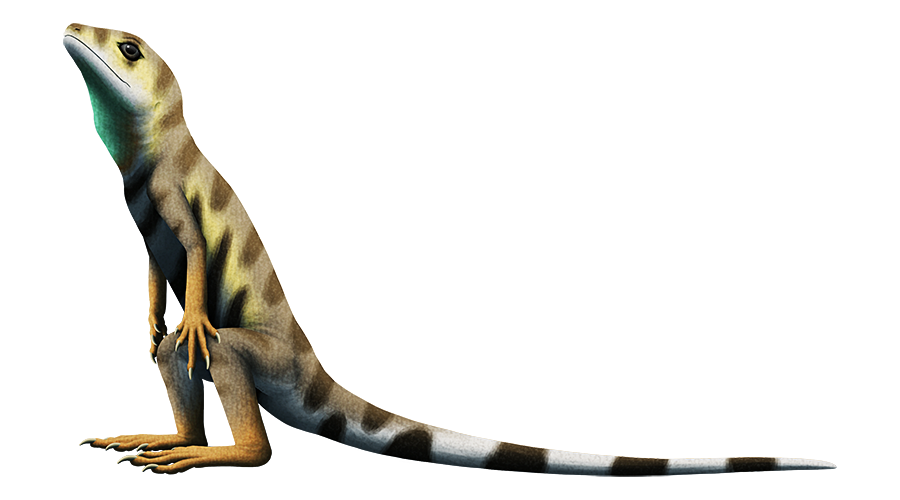Eudibamus cursoris, a bolosaurid from the Early Permian of Germany (~284-279 mya).
Although very lizard-like in appearance, this animal was actually part of a completely extinct group known as parareptiles – a diverse group of early sauropsids who were once thought to be the ancestors of turtles, but are now considered to instead be the evolutionary cousins to the true reptiles.
With a total length of about 25cm long (8-10″), the structure and proportions of its limbs suggest it could run fast on its hind legs, making it one of the earliest known examples of bipedal locomotion. Since its teeth were adapted for a herbivorous diet, it wasn’t using its speed to chase down prey but was instead probably sprinting away from predators.
But unlike the sprawling running of some modern lizards, Eudibamus may have been capable of holding its legs in a more upright position directly under its body, convergently evolving a more energy-efficient posture similar to that of later bipedal animals like dinosaurs.

